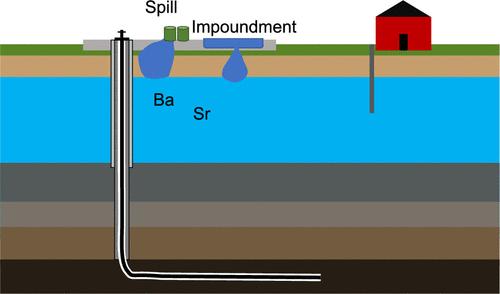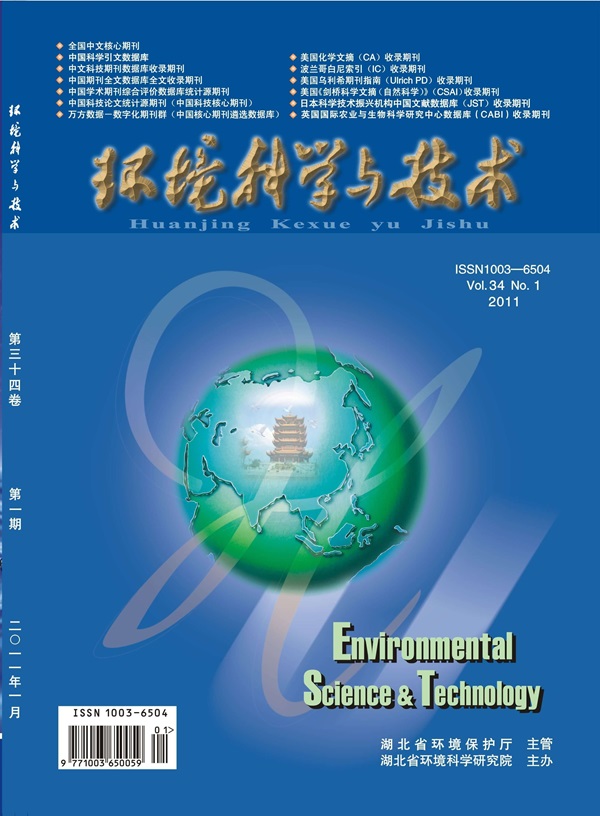页岩气产生的废水导致区域性地下水轻微盐碱化
IF 10.8
1区 环境科学与生态学
Q1 ENGINEERING, ENVIRONMENTAL
引用次数: 0
摘要
虽然非常规石油和天然气(UOG)的开发正在改变世界经济,但 UOG 开发过程中使用的工艺(如大容量水力压裂法("压裂法"))也与水污染有关。水质风险包括在井场共同产生的天然气和含盐液体(盐水)的泄漏。然而,确定污染原因非常困难,因为地下油气井通常与其他污染源位于同一地点。我们调查了世界上最大的页岩气开采区,并公开了地下水数据(美国宾夕法尼亚州的马塞勒斯页岩,分析次数达 29,000 次),结果发现,卤水相关的钡([Ba])和锶([Sr])浓度在 UOG 开发区 1 公里范围内呈现小幅区域性增长。地下水中较高的浓度与 UOG 井的距离和密度有关。如果考虑到与 (i) 与泄漏有关的违规行为和 (ii) 一些废水蓄水池的位置相关联,则浓度的增幅会更大。即使校正了其他自然和人为盐类来源,这些具有统计意义的关系仍然存在。最有可能的解释是,UOG 开发略微增加了区域地下水中的盐浓度,这并不是因为压裂,而是因为普遍存在废水管理问题。这些结果表明,在石油和天然气开采过程中需要采取严格的废水管理措施。本文章由计算机程序翻译,如有差异,请以英文原文为准。

Wastewaters Coproduced with Shale Gas Drive Slight Regional Salinization of Groundwater
While unconventional oil and gas (UOG) development is changing the world economy, processes that are used during UOG development such as high-volume hydraulic fracturing (“fracking”) have been linked with water contamination. Water quality risks include leaks of gas and salty fluids (brines) that are coproduced at wellpads. Identifying the cause of contamination is difficult, however, because UOG wells are often colocated with other contaminant sources. We investigated the world’s largest shale gas play with publicly accessible groundwater data (Marcellus Shale in Pennsylvania, U.S.A. with ∼29,000 analyses) and discovered that concentrations of brine-associated barium ([Ba]) and strontium ([Sr]) show small regional increases within 1 km of UOG development. Higher concentrations in groundwaters are associated with greater proximity to and density of UOG wells. Concentration increases are even larger when considering associations with the locations of (i) spill-related violations and (ii) some wastewater impoundments. These statistically significant relationships persist even after correcting for other natural and anthropogenic sources of salts. The most likely explanation is that UOG development slightly increases salt concentrations in regional groundwaters not because of fracking but because of the ubiquity of wastewater management issues. These results emphasize the need for stringent wastewater management practices across oil and gas operations.
求助全文
通过发布文献求助,成功后即可免费获取论文全文。
去求助
来源期刊

环境科学与技术
环境科学-工程:环境
CiteScore
17.50
自引率
9.60%
发文量
12359
审稿时长
2.8 months
期刊介绍:
Environmental Science & Technology (ES&T) is a co-sponsored academic and technical magazine by the Hubei Provincial Environmental Protection Bureau and the Hubei Provincial Academy of Environmental Sciences.
Environmental Science & Technology (ES&T) holds the status of Chinese core journals, scientific papers source journals of China, Chinese Science Citation Database source journals, and Chinese Academic Journal Comprehensive Evaluation Database source journals. This publication focuses on the academic field of environmental protection, featuring articles related to environmental protection and technical advancements.
 求助内容:
求助内容: 应助结果提醒方式:
应助结果提醒方式:


